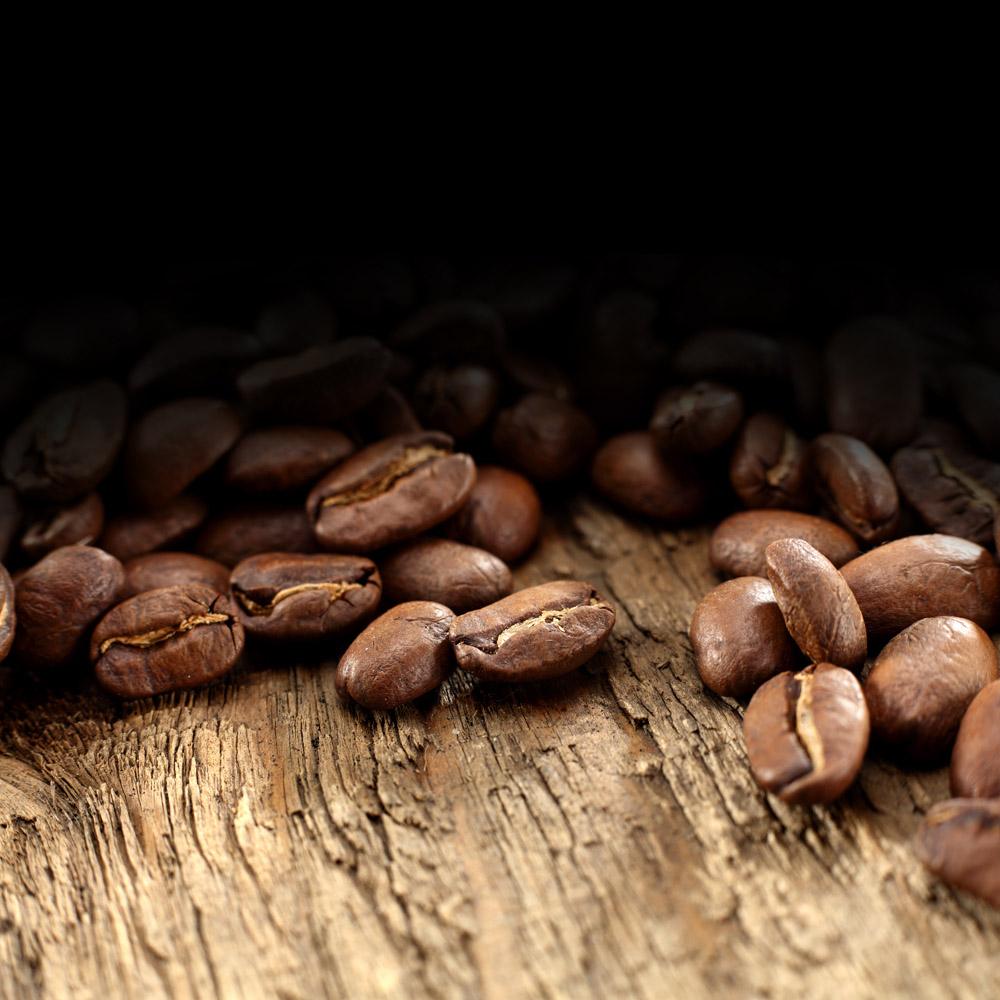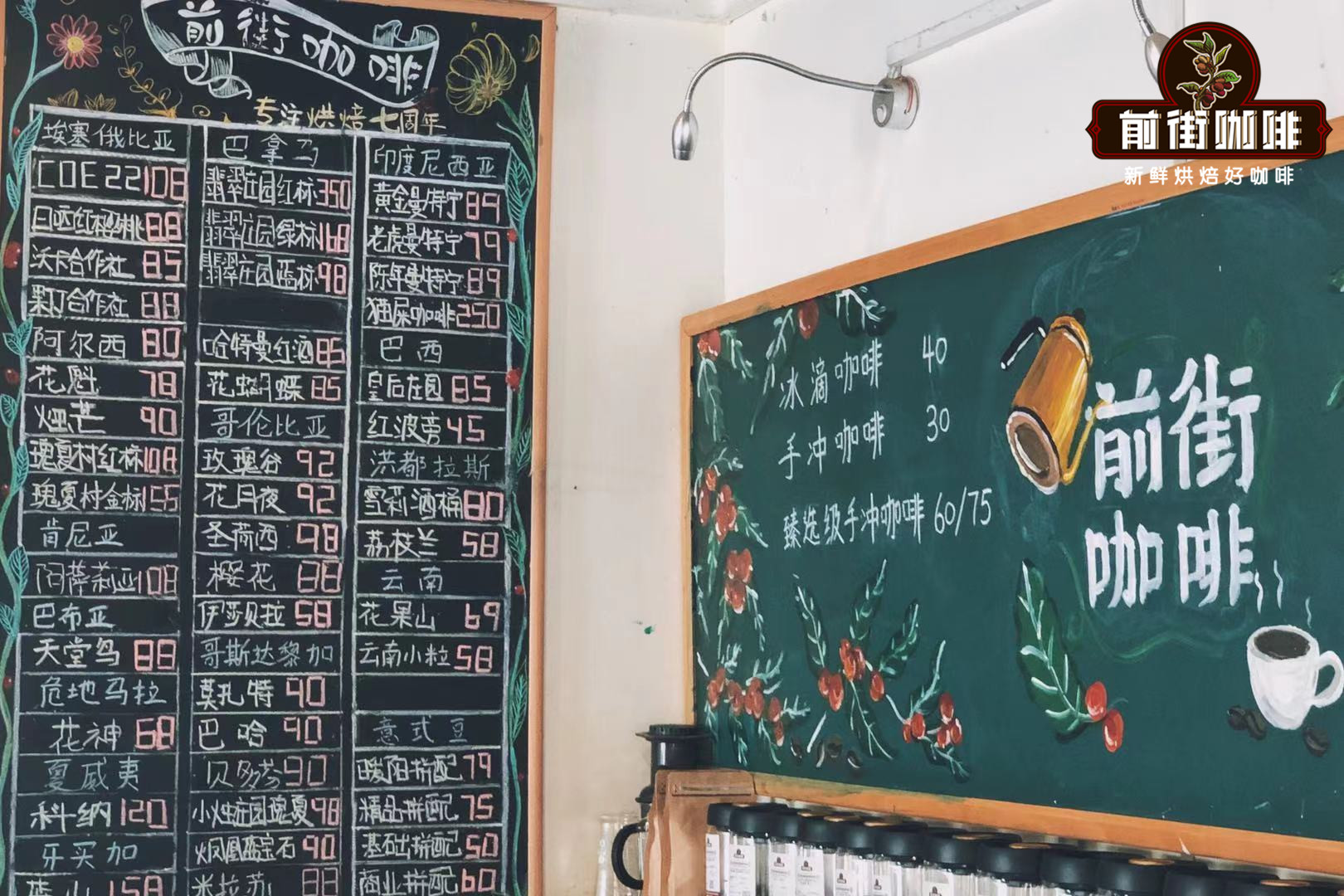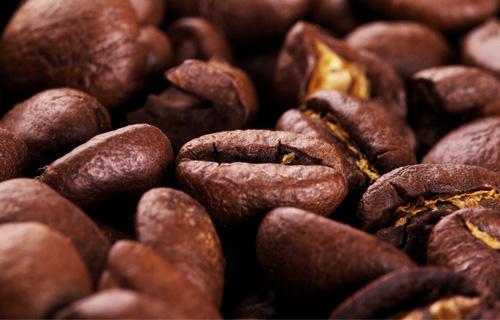Kenyan coffee bean producing area, Kenyan coffee bean characteristics
Follow the caf é (Wechat official account vdailycom) and found that Beautiful Cafe opened a small shop of its own.
Coffee bean producing areas in Kenya
NYERI (Nieli)
NYERI: Nyeri in central Kenya is home to the extinct volcano Mount Kenya. The red soil in this area breeds the best coffee in Kenya. Agriculture is extremely important here; coffee is the most important crop. Common cooperatives made up of small farmers are more common than large manors. There are two harvests in this area, but coffee from the growing season is usually of high quality.
Altitude: 1200-2300 m
Harvest period: October to December (main production season), June to August (by-product area)
Varieties: SL-28, SL-34, Ruriu11, Batian.

MURANG'A (Mu Rentu)
MURANG'A: there are about 100000 coffee farmers in this area of the province. This inland producing area was the place of settlement chosen by the first missionaries because Portugal banned them from living in coastal areas. This is also another German producing area that benefits from volcanic soil, with more small coffee farmers than manors.
Altitude: 1350 to 1950 m
Harvest period: October to December (main production season), June to August (by-product season)
Varieties: SL-28, SL-34, Ruiru11, Batian
KIRINYAGA (Kirinaga)
The KIRINYAGA:Nyeri producing area lies to the east, and this area also benefits from volcanic soil. Coffee is usually produced by small farmers, and wet treatment plants also produce a lot of very high quality coffee, which is well worth a try.
Altitude: 1300 to 1900 m
Harvest period: October to December (main production season), June to August (by-product season)
Varieties: SL-28, SL-34, Ruiru11, Batian.
EMBU (Enbu)
EMB: the name of this area near Mount Kenya comes from the city of Embu, where about 70% of the population is engaged in small-scale farming, and the most popular cash crops in the area are tea and coffee. Almost all coffee comes from small farmers, and the yield in this area is relatively small.
Altitude: 1300
MERU (Meru)
MERU: most of the coffee in this area is grown by small farmers in the foothills of Kenya and in the Nyambene hills. The name refers to the magnetic field area and the Meru people who live there. They were the first Kenyans to start producing coffee in the 1930s because of the importance of guaranteeing the rights of people of African descent in Kenya in the White Paper (devonshire white paper) signed in 1923.
Altitude: 1300 to 1950 m
Harvest period: October to December (main production season), June to August (by-product season)
Varieties: SL-28, SL-34, ruiru11, Batian, K7
KIAMBU (Giambo)
KIAMBU: this producing area in central Kenya has the highest coffee growing area in the region. However, some coffee trees at high altitudes can get Dieback and stop growing. This producing area is named after the town of Nakuru. Coffee is grown here in the form of both manors and small farmers, but the yield is relatively small.
Altitude: 1850-2200 m
Harvest period: October to December (main production season), June to August (by-product season)
Varieties: SL-28, SL-34, Ruiru11, Batian
KISII (Kisi)
KISII: this area is located in southwestern Kenya, not far from Lake Victoria, is a relatively small producing area, most coffee beans come from free small producers of common cooperatives.
Altitude: 1450 to 1800 m
Harvest period: October to December (main production season), June to August (by-product season)
Varieties: SL-28, SL-34, Lanshan, K7
TRANS-NZOIA, KEIYO&MARAKWET (Terrance-Enzoya & Maraquette)
TRANS-NZOIA, KEIYO&MARAKWET: this small producing area in western Kenya has begun to develop in recent years. Mount Elgonne provides a certain altitude, and most of the coffee comes from the manor. Coffee is usually grown to diversify previously exclusive cornfields or dairy farms.
Altitude: 1500 to 1900 m
Harvest period: October to December (main production season), June to August (by-product season)
Varieties: ruiru11, batian, SL-28, SL-34.
Kenyan coffee varieties: two Kenyan varieties have particularly attracted the attention of the boutique coffee industry: SL-28 and SL-34. This is Guy from Scott Lab (Scott Laboratories). The research project led by Guy Gibson produced two of the 40 experimental varieties, but these varieties are susceptible to leaf rust.
The bourbon variants (SL-28) and (SL-34) have always been the winners of the expert cup test Narobi auction. The Kenyan raspberry flavor comes from these two beans-- especially (SL-28)-- is the consensus of experts. But although his flavor is good, his production capacity and disease resistance is not good.
Characteristics of Kenyan coffee beans
There are two types of coffee farms in Kenya. One is a large plantation that covers an area of more than five acres, but the average elevation is low. In the case of Kenyan coffee, the coffee beans of the large farms are of medium quality. The best Kenyan beans come from small farms, most of which are located in the foothills or volcanic slopes above 5,000 to 6,000 feet. Each small farmer has a capacity of only 20 to 70 bags per season and cannot afford to invest in expensive washing plants, but small farmers are very United. Hundreds or thousands of households are gathered to set up a cooperative farm, which is funded by the government to build a washing treatment plant, and the coffee fruits picked by small farmers are sent to the cooperative farm for unified processing. First remove the half-ripe or rotten fruit, then peel, ferment, decompose the flesh, remove the coffee beans, then dry and polish, the whole process is supervised by the official Coffee Administration, which ensures the quality of Kenyan coffee. Kenya bean washing processing technology and high standards of quality control, has always been an example of bean-producing countries.
Don't underestimate the small farmers in Kenya, they are just like ants, and their overall production capacity is higher than that of large farms, about six to four, which is quite rare in bean-producing countries. Kenyan coffee is widely appreciated by connoisseurs, thanks in large part to small farmers guarding the foothills and producing high-quality coffee. In addition, Kenya beans must have a strict grading system. Coffee beans taken out by washing plants are divided into five grades according to size, shape and hardness, with the highest being PB, followed by AA++, AA+, AA and AB. This grading system is similar to Colombia, mainly in terms of particle size and shape, but selling well does not necessarily lead to good flavor. This is what coffee fans should know. The current international evaluation of Kenyan beans is not as good as in previous years. It is believed that this has something to do with the abnormal climate, which is not conducive to the growth of coffee, but the matter is not so simple. This is related to the Kenyan authorities' efforts to promote the new variety Ruiru11 with stronger disease resistance and higher yield per unit. According to the taste test, the new variety with higher economic value has a worse flavor than the traditional variety, and to make matters worse, Ruiru11 is about to replace the traditional Arabica and Bourbon varieties. In addition, the quality of coffee is declining, the auction price is not good, and the income of small farmers is reduced. Coupled with the fact that the coffee management bureau is not a paradox, farmers' enthusiasm for coffee will be greatly reduced, which will of course affect the quality of coffee. Moreover, Kenya's outstanding washing technology has also declined, which is the killer of strangling quality.
In addition, Kenya was an early British colony, and the British had established a perfect cultivation and quality control system. After the independence of Kenya, the coffee industry has made great strides on the existing basis and has become a foreign exchange earning industry in Kenya.
Important Notice :
前街咖啡 FrontStreet Coffee has moved to new addredd:
FrontStreet Coffee Address: 315,Donghua East Road,GuangZhou
Tel:020 38364473
- Prev

Kenya AA Coffee Variety Features Kenya coffee beans Hand brewed Flavor Taste Description
Pay attention to coffee reviews (Weixin Official Accounts vdailycom) and find a good coffee shop. Coffee industry insiders all think Kenyan coffee is one of their favorite products, because Kenyan coffee contains every feeling we want from a good cup of coffee. It has wonderful,
- Next

Kenyan coffee beans. How about Kenyan coffee beans?
Following caf é comments (Wechat official account vdailycom) found that Fairview Cafe opened its own shop for Kenyan coffee beans: the best grade of Kenyan coffee is PB, followed by AA, AB and so on. PB (PeaBerry) round beans: this is the grading for small round beans. This means that there is only one stone in the coffee fruit, not the common one.
Related
- Detailed explanation of Jadeite planting Land in Panamanian Jadeite Manor introduction to the grading system of Jadeite competitive bidding, Red bid, Green bid and Rose Summer
- Story of Coffee planting in Brenka region of Costa Rica Stonehenge Manor anaerobic heavy honey treatment of flavor mouth
- What's on the barrel of Blue Mountain Coffee beans?
- Can American coffee also pull flowers? How to use hot American style to pull out a good-looking pattern?
- Can you make a cold extract with coffee beans? What is the right proportion for cold-extracted coffee formula?
- Indonesian PWN Gold Mandrine Coffee Origin Features Flavor How to Chong? Mandolin coffee is American.
- A brief introduction to the flavor characteristics of Brazilian yellow bourbon coffee beans
- What is the effect of different water quality on the flavor of cold-extracted coffee? What kind of water is best for brewing coffee?
- Why do you think of Rose Summer whenever you mention Panamanian coffee?
- Introduction to the characteristics of authentic blue mountain coffee bean producing areas? What is the CIB Coffee Authority in Jamaica?

